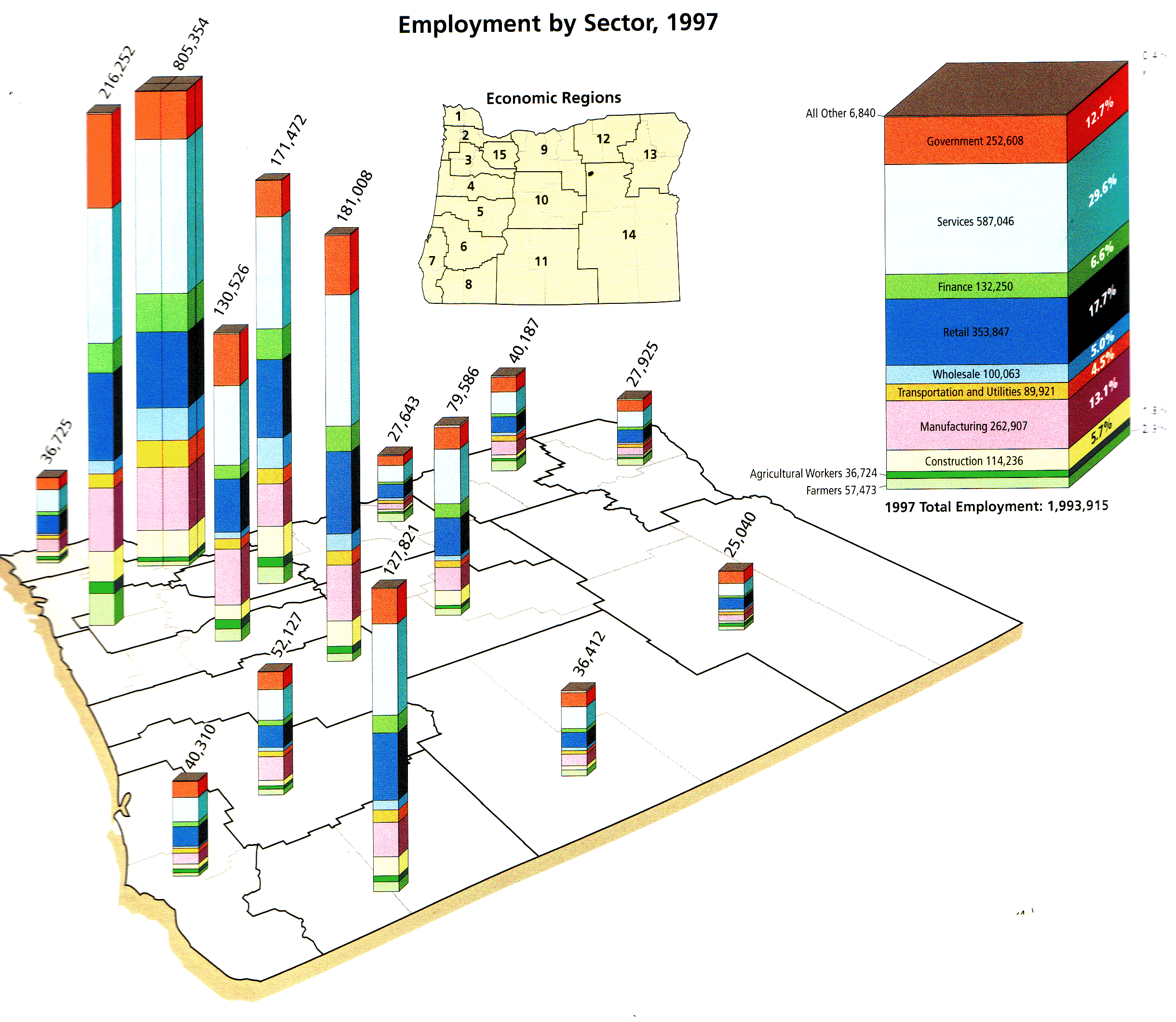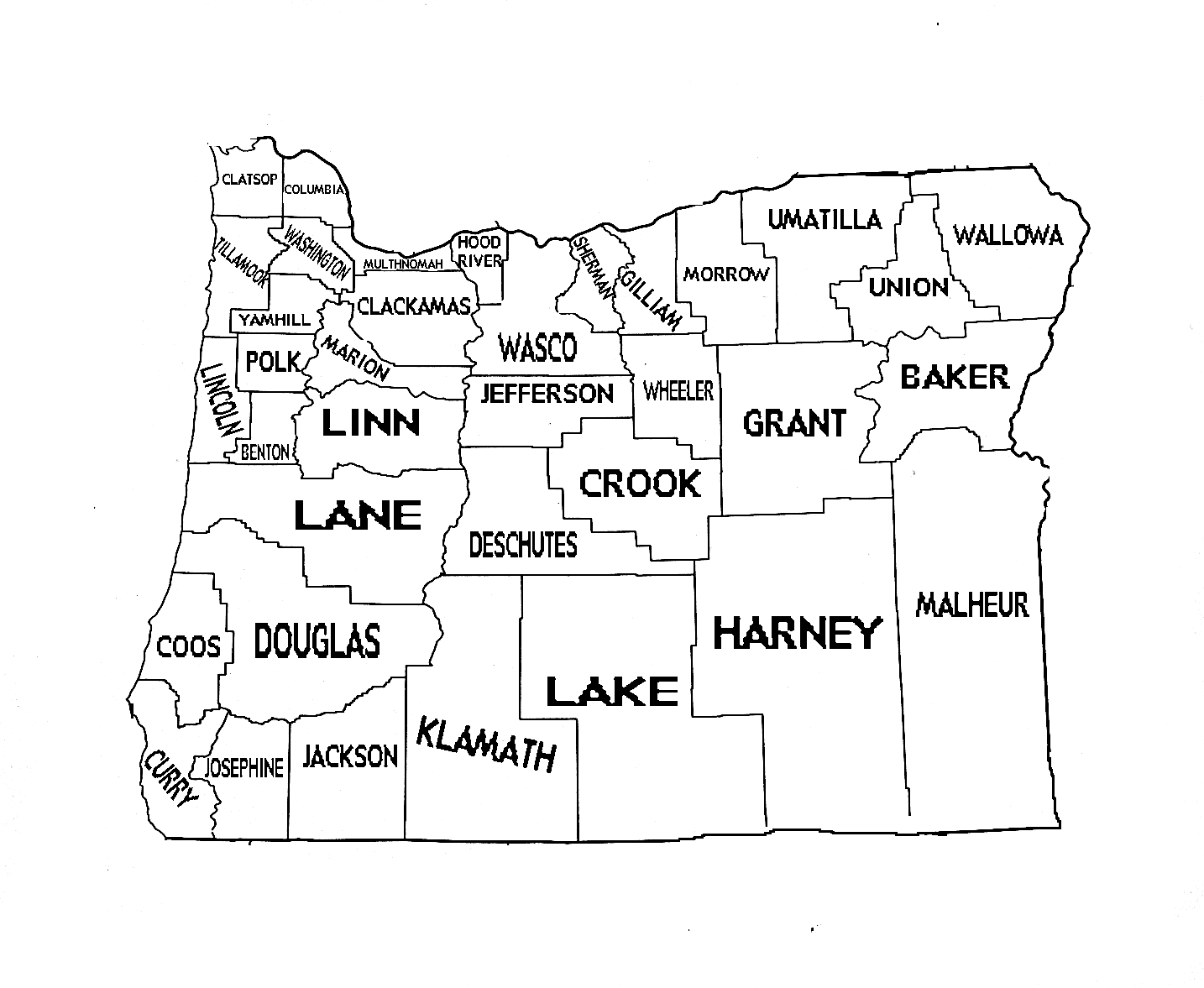
|
Title |
¿En qué trabajamos? |
|
Unit/Activity No. |
Human Geography Unit 1/Activity 3 |
|
Geographic Topic |
Economic activities and patterns |
|
Language Topic |
Jobs, places |
|
Language Function |
Describe, compare |
|
Language Standard |
1.3, 3.1 |
|
Geography Standard |
3, 9 |
| Step 1. | Before class prepare a handout and a transparency. |
| Step 2. | Place students into groups of three and distribute the activity and two blank sheets of paper to each group. |
| Step 3. | Complete Paso 1. |
| Step 4. | Have the students draw the two counties on the black sheets of paper and complete Paso 2. |
| Step 5. | Present to class. |
Statistical information by county that indicates: socioeconomic groups and economic activity (agricultural, industrial, commercial, etc). See maps and tables in ATLAS OF OREGON (University of Oregon Press), pp. 64, 67, 72-77.
Maps of each county in Oregon or of a certain region of Oregon
Markers, magazine clippings/graphics representing different products, industries, etc.
You can do this activity using regions of the state, rather than counties (e.g. Willamette Valley, costal Oregon, High Desert, Columbia Valley, etc.)
Students may need some examples in Paso 2 to help them represent the data graphically. For example, for economic sectors, they could draw small pictures or use magazine cutouts of computers, trees in a forest, farm products or equipment, etc. See also Immigration Unit 1/Activity 2, Los mapas cloropleth.
The following list is long; review or preteach only the vocabulary for jobs, industries, or sectors that are appropriate to the regions being discussed. Be sure to provide any additional items that are of interest to students. To integrate this vocabulary, have students do circumlocution activities, e.g. students write definitions of what each profession does, read their definitions to a partner, who tries to guess the profession.
MODELO
S1: Esta persona trabaja en un hospital y cuida a los pacientes.
S2: ¿Es enfermera?
S1: No, esta persona también hace operaciones.
S2. Es médico.
Las profesiones:
|
el (la) abogado(a) |
lawyer |
|
el actor |
actor |
|
la actriz |
actress |
|
el (la) agente de viajes |
travel agent |
|
el (la) agricultor(a) |
famer |
|
el (la) arquitecto(a) |
architect |
|
el (la) artista |
artist |
|
el (la) atleta |
athlete |
|
el (la) autor(a) |
author |
|
el (la) barbero(a) |
barber |
|
el (la) bombero(a) |
firefighter |
|
el (la) cajero(a) |
cashier |
|
el (la) camarero(a) |
waiter |
|
el (la) cantante |
singer |
|
el (la) científico(a) |
scientist |
|
el (la) cocinero(a) |
chef, cook |
|
el (la) dependiente |
store clerk |
|
el (la) doctor(a) |
doctor |
|
el (la) enfermero(a) |
nurse |
|
el (la) escritor(a) |
writer |
|
el (la) farmacéutico(a) |
pharmacist |
|
el (la) fotógrafo |
photographer |
|
el (la) ingeniero(a) |
ingineer |
|
el (la) intérprete |
interpreter |
|
el (la) jardinero(a) |
gardener |
|
el (la) locutor(a) |
newscaster |
|
el (la) maestro(a) |
teacher |
|
el (la) mecánico(a) |
mechanic |
|
el (la) médico(a) |
doctor |
|
el (la) músico(a) |
musician |
|
el (la) panadero(a) |
baker |
|
el (la) peluquero(a) |
hair dresser |
|
el (la) periodista |
journalist |
|
el (la) piloto(a) |
pilot |
|
el (la) pintor(a) |
painter |
|
el (la) plomero(a) |
plummer |
|
el (la) político(a) |
politician |
|
el (la) programador(a) |
programmer |
|
el (la) reportero(a) |
reporter |
|
el (la) secretario(a) |
secretary |
|
el (la) traductor(a) |
translator |
|
el (la) vendedor(a) |
salesperson |
|
la clase media |
middle class |
|
la clase obrera |
working class |
|
la clase alta |
upper class |
|
la clase baja |
lower class |
|
|
|
|
rico /a |
rich |
|
la riqueza |
wealth |
|
Pobre |
poor |
|
la pobreza |
poverty |
|
la mayoría |
majority |
|
la minoría |
minority |
|
la actividad económica |
economic activity |
|
la agricultura |
agriculture, farming |
|
la selvicultura |
forestry |
|
el comercio |
business |
|
la industria |
industry |
|
el sector tecnológico |
high tech sector |
|
La pesca |
fishing |
|
El turismo |
tourism |
|
El sistema educativo |
Education system |
|
|
|
|
Para comparar |
|
|
más que |
more than |
|
menos que |
less than |
|
más/menos de (+ number) |
more/less than (+ number) |
Handout 1
Paso 1. Working in a group of three students, pick two counties from the map that have variation in socioeconomic level or economic activity. Write sentences in Spanish that compare the two counties.
MODELOS
En el condado de Washington hay más trabajos en el sector tecnológico que en todo el sur del estado.
La mayoría de los trabajos en el suroeste del estado están en el sector de selvicultura.
Paso 2. Use a blank map of the two counties to indicate visually the difference in the statistics you described in Paso 1.
Paso 3. Present your group’s information to the class. Include a description of the geographical location and place your graphic in its correct position relative to the other groups’ maps on a bulletin board or wall.
Transparency 1

Transparency 2

Transparency 3

1. If you have done the activity ¿Quién vive en esta región? (Activity 4), have students combine the data from the two maps. Then they can try to make more complicated comparisons in Spanish, relating ethnic composition and economic activity.
MODELO
En el valle del Willlamette, la mayoría de los inmigrantes mexicanos trabajan en la agricultura, no en la selvicultura.
2. Have students describe in Spanish the county in which their school is located (Lane, for example). Report the Lane County information to the class on a transparency. Groups of three or four students then come up with specific examples from their personal experience that illustrate the statistics they have just learned about their county. For example, local industries that make certain products (agricultural, industrial, or commercial), visible examples of the presence of certain ethnic populations (markets, restaurants, cultural events), etc.